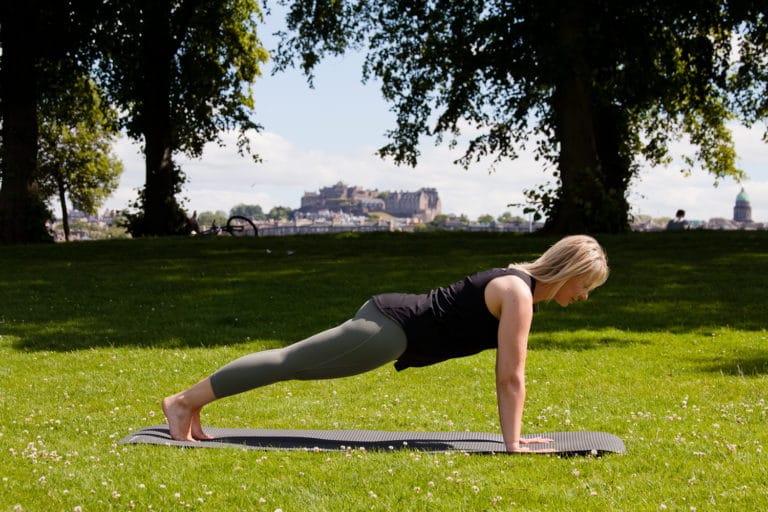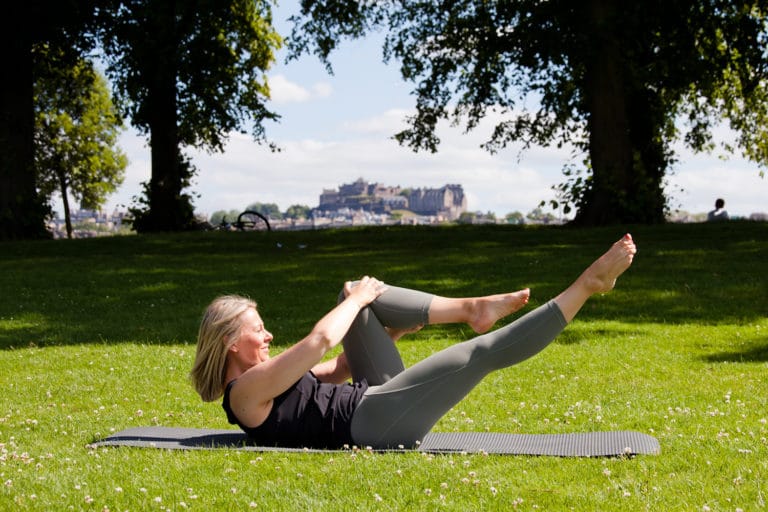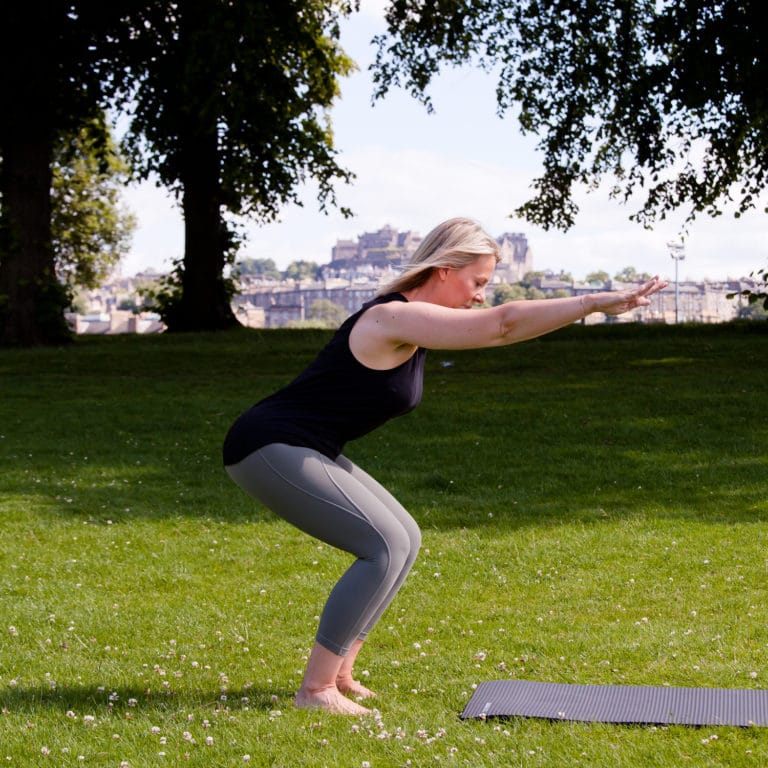Understanding Your Stress Response.
Hi friends
Do you find yourself coming down with a cold or virus as soon as you go on annual leave?
You’re not alone! Research indicates that around 1 in 5 of us will come down with the common cold during a period of annual leave.
And this recent article by the New York Times cited that being under severe stress for more than one month but less than six months doubled a person’s risk of a cold, compared with people experiencing only routine stress.
But what is routine versus severe stress? And what does it have to do with us catching a cold?
Well, it’s all down to how you respond to the stress in your life and in this month’s lifetonic, we’re going to be digging deeper into what your stress response is, why stress can sometimes be good for you and how to look out for the ‘bad’ stress that’s not so good!
You’ll also learn about your three in-built responses to stress, looking at three of the most powerful ways you can control the physiological effects of stress with your TLC tools and resources.
So if you’re looking to book that annual leave for the Christmas Holidays and actually get to make the most of it, then this is the lifetonic for you!

What is stress?
Quite simply, stress occurs when pressure exceeds your perceived ability to cope.
This is really important to understand, because it’s not just about external pressures like hitting deadlines, but whether you believe that you can cope with a situation that you perceive as important or threatening.
That means stress is going to be different for every body!
The good news is, through experience, understanding your stress response and developing helpful coping mechanism, you can actually get good at stress and it can help to make you more resilient for whatever life throughs at you.
This line of thinking is rooted in positive psychology and is often called developing a ‘growth mindset.’
Understanding Your Stress Response
The stress response is a biological set of processes that start in the brain and body and are triggered once you become stressed (Palmer and Cooper, 2015).
It is important to note that there are two biological responses to stress; a short term stress response, which is a natural response to dealing with threating situations, and a long term or ‘chronic’ stress response, which can lead to a number of different physical and mental health conditions if left unmanaged.
The diagram below is actually a diagram I put together for my stress coaching certification. It helps to explain the long and short term stress response, including the main hormones involved.
The blue areas illustrate the short term or ‘acute‘ stress response. Acute stress is the ‘good’ stress or the healthy response to stress. This is the stress that protects you from the threat of danger and can help motivate you to get things done, achieve a goal or complete a project on time.
Here’s the cool bit – acute stress supports your immunue system. For example, the release of stress hormones such as adrenaline and noradrenaline help to prepare your heart, lungs and major muscles groups for action (fight or flight mode), whilst fats and sugars are released into your blood to provide energy.
Combined, they’re actually working for you, helping you to stay safe or ‘get the job done.’ This response prepares you for action. When you take that action, or ‘get the job done,’ your using up that energy your body has given you to remove the stress, helping it to return to balance. This is called regulating your stress response.

Where we can run into hot water, is where we don’t take any action to regulate our stress system. Instead, we just let stress go round and round, taking ourselves into a cycle of chronic or long term stress.
The orange area illustrate the longer term, ‘chronic‘ stress cycle and is epitomised by the ‘always on’ culture. .
The chronic stress response is made in your HPA Axis (Hypothalamus, Pituitary, Adrenal).
Constant stimulation of the HPA axis can lower the body’s immune system and increase blood pressure leading to hypertension and regular headaches and colds.
And although adrenal fatigue is not a real condition, it goes some way to describing the ‘stress’ that the adrenal gland is put out during periods of chronic stress. Chronic stress puts it at risk of malfunction, which can result in tiredness, digestive difficulties, sleep disturbances, dizziness and a craving for sweet and starchy food.
Sound familiar?
Our in-built responses to stress
There are only three 3 ways your body responds to stress. These are:
- physiologically (tension headaches, back pain and tightness in the body, migranes, IBS, dry mouth, pain or tightness in the chest, shortness of breath, dizzy spells)
- cognitively (thoughts and feelings that skew negatively like anger, depression, jealousy, images of things going wrong, low energy)
- behaviorally (your actions including things like comfort eating, increased alcohol consumption, poor time management, procrastination, increased absenteeism from work).
In this lifetonic, we’re mainly going to be looking at the physiological responses but stand by for future lifetonics, which will look at important aspects of the other two.

Resetting your Stress Response
Whether you’re aware of it or not, the tools and resources that you have access to within the lifetonic Club offer you a mind / body / life approach to managing your stress response and boosting your wellbeing.
The only thing you have to do is to take action!
This is the hard part of most of us. No longer do we have tigers chasing us, so taking action on our stress response has become less about survival. It’s a mind set shift we have to make – it IS still very much about our survival, the long term survival of our health, our relationships and our life!
Let’s look at how some of the tools and resources with TLC are set up to support this:
Wellbeing Resources
- Get ahead of your stress response by starting each week asking yourself how you want to feel? The use your Lifetonic Quick Start Guide to draw out your own unique feel good vibe – keep this somewhere you can see it and notice the things that take you away from this feeling. Remove or eliminate them.
- You can also use this guide to plan out the time of day that’s best for you to do pilates.
- Use your Progress Book to audit the key relationships in your life on a regular basis
10 minutes is better than none
One of the best known ways to lower your stress levels is through exercise (White, 2017,; Palmer and Cooper, 2015). In his book ‘The Stress Solution,’ Dr. Raangan Chatterjee states that exercise is one of the best ways to pull yourself out of a “damaging stress state,” caused by too many “Micro Stress Doses” (MSD).
This is a term he uses to describe the modern day ‘always on’ culture (texts, emails, alerts, notifications). MSD cause your body to pump out cortisol over and over again. Moving helps to use up that cortisol and sends a ‘safe’ signal to your brain, triggering the rest and digest response.
One of the best findings of recent years is that it’s no longer about duration or intensity, but the importance of moving your body as much as possible each day, and paying attention to how you feel before and after that can really have the most impact (Chatterjee, 2017).
- Set a reminder on your phone to complete at least one workout a week from your Bodytonic Library
- Struggling with motivation? Default to the 7 minute warm up routine. Done is better than none.
- Tick off your workout on your monthly calendar and keep it somewhere you can see it – it’s a powerful way of keeping you motivated
- Create your own monthly calendar using the blank template from your dashboard
- Use your Progress Book to keep check in on how you feel – you can audit your energy and sense of calm using this book
- Listen to this super short podcast on the power of movement and how to make it easy (hint: the lifetonic club is built around this whole idea!)
Eat more anti-inflammatory foods
Maintaining a healthy diet plays an important part in maintaining a healthy body and mind (White, 2017).
Chronic stress increases chronic inflammaton in the body but the good new is, eating well can help reduce inflammation (Charterjee, 2017) and prevent things like heart disease, type 2 diabetes, obesity, high blood pressure and even cancer.
Central to this is eating a balanced, healthy diet. This can include things like healthy fats (avocado, nuts, seeds, olive oil, oily fish like salmon), complex carbohydrates and foods that are high in fibre (green, leafy veg, wholegrain pasta, rice, bread, sweet potato and fruit), protein (lean meat, chicken eggs, lentils) and avoiding refined sugar, overly processed food and unhealthy fats (saturated and trans fats) (White, 2017; Palmer and Cooper, 2015).
Did you know that anti-inflammatory foods can also help you to regulate your mood and perform better?
To help us dive a little deeper into this subject, I’m delighted to bring you a BONUS series this month called ‘Food for Mood.’
These short videos, (all under 10 minutes), have been created for us by our brilliant in-house nutritionist, Moira Newiss and you watch them below for some helpful hints and tips about how to use food for mood!
Learn to relax
There are many mind body techniques that can use used to help enter a state of calm and relaxation and reduce the effects of stress and tension, including meditation, breathwork, relaxation imagery and pilates (Chatterjee, 2018).
All of these techniques work by enhancing the para-sympathetic nervous system helping you to access your ‘rest and digest’ state.
Palmer and Cooper (2015) state that “mediative techniques can lead to 50 per cent fewer visits to hospital as either an in or out patient.”
- Tag a Mindtonic onto the end of your pilates routine (stay in relaxation position for this)
- Roll our your mat and do 10 minutes of breathing for relaxation
- Try the Pilates for a Better Night’s Sleep routine, that can be found in your 10 Min Bodytonic Library (bonus points if you then follow it with a Mindtonic)
- Journal and start by asking yourself the question ‘what am I most worried about right now’ then let your pen flow
- Keep a gratitude list. Just note down 3 simple things – this works best for me at the end of each day.
- Surround yourself with good people
In my opinion, movement that strengthens and nourishes your body, a diet that’s fulled by whole, real foods and taking time out to promote healing and relaxation in your body and mind are the holy trinity of controlling your response to stress at a physiological level.
Work towards building your own unique toolkit for respoinding to your stress by picking one or two things to focus on for this month.
I hope you are starting to feel the benefits of what taking small, intentional steps with your health can really do for you.
Have a peaceful October.

Download your October Mindtonic for daily inspiration:
Desktop Background // Phone Background // Instagram Post
Start to cultivate your fresh habits with your Weekly Planner Download



